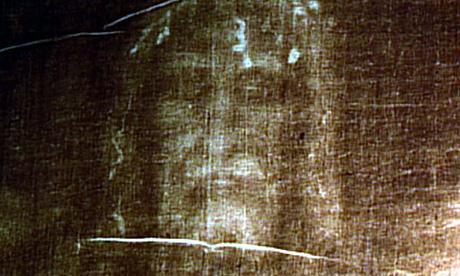A new study suggests the figure on the Shroud of Turin was crucified with his hands over his head, rather than to his side.
The scientist leading the study suggested that being crucified in a “Y” shape would be very painful and would probably cause asphyxiation for the victim.
Scientists at the Liverpool John Moores University in the United Kingdom announced their findings at the American Academy of Forensic Sciences earlier this year.
They argue that the Shroud of Turin, believed by some to be the burial cloth of Jesus, shows an image of a man with blood stains streaking down his arms.
Matteo Borrini, who led the shroud study at the John Moores University, argues that these stains could only have been obtained if the victim’s arms were hung over his head in a “Y” shape, instead of the “T” shape that is so prevalent in Christian art.
The scientists reached their new conclusion after having scientist Luigi Garlaschelli of the University of Pavia, Italy, act out different crucifixion poses.
He had donated blood dripping down his arms via a cannula.
As Borrini told the New Scientist, this new crucifixion position would have been much more painful than the “T” shaped crucifixion.
Being hung with one’s arms above their head makes it very difficult to breathe.
The Shroud of Turin is a 14-foot linen that has a full-length photonegative image of a wounded man on the front and back of the cloth.
Researchers have never been able to conclusively show how it was formed.
In 1988, carbon testing dated the cloth to the 12th century, leading many to conclude that the shroud is a medieval forgery.
These results have been contested on various grounds, included claims that the piece tested was a medieval repair.
Borrini said that if the shroud is a forgery, it is expertly done since the blood stains line up as accurately as if they were produced from an actual crucifixion.
Sources
